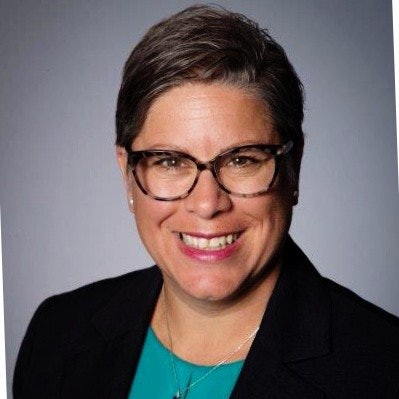On this year’s International Women’s Day, I vividly recall the life-changing advice I once received about the delicate balance between career ambition and family.
Could I have a child and still climb the corporate ladder? What if I became pregnant during the interview process?
My former manager at IBM encouraged me to flip the script: What if I first got the promotion and then became pregnant? Would my career advancement come to a grinding halt? No. I would keep forging ahead.
In my 14 years there, IBM consistently justified its usual place at the top of rankings of the best companies for women executives. I was surrounded by strong female role models across the company and worked with men who routinely supported women at all levels of their career.
 Erin K. O’Brien
Erin K. O’BrienRegrettably, that is not the case throughout the workforce, where only 5.2 percent of S&P 500 CEOs are women. As Chief Enrollment Officer at the University at Buffalo School of Management, I can say that the business school community is doing its part to effect change. As leaders, we aspire to see the day when rising women’s enrollment in MBA classrooms serves a precursor to greater female leadership in corporate boardrooms. According to the Forté Foundation, women now account for 39 percent of full-time MBA students in the U.S. and 36 percent outside of America. Yet while men receive an average of 2.3 promotions after completing their MBA program, women receive 1.8. Men have an average of 3.3 employees reporting to them, and women have 1.8.
Progress will not occur without action. Just as I proactively sought out advice on work-life balance from my former manager at IBM, business schools need to intentionally brainstorm and execute strategies around women’s empowerment if they wish to play a leading role in creating a more equitable workplace.
This means building campus infrastructure that ensures women are welcome, valued and heard. It also involves placing the priority of countering gender and diversity inequity at the forefront of the business school mission. Some specific steps could include:
- Appointing a senior leader for diversity and inclusion. With a visible leader, conversations and ultimately policy changes around gender equity actually take place. In any organization and especially in business schools, change occurs because stakeholders such as applicants and current students demand that change–through enrollment or through voicing their concerns.
- Engaging with external diversity organizations. When the University at Buffalo School of Management sought to increase enrollment from veterans, we knew we could not accomplish that alone. We partnered with veterans’ organizations and employers, joining forces to make a much stronger statement than we each would have made in isolation. The same model should be implemented for goals pertaining to diversity and equity.
- Increasing the representation of women in business case studies and other course materials. As Colleen Ammerman, director of the Gender Initiative at Harvard Business School–has said, case studies “send a broader message about what leadership looks like. When the leader archetype is very narrowly defined, it not only hinders the ability of students who don’t share those characteristics to identify with the protagonist, it also reinforces stereotypes about who ‘real leaders’ are.”
- Accommodating mid-career and nontraditional students who face complex life decisions. Deloitte has found that 40 percent of the U.S. population believes it is impossible to succeed at work and have a balanced family life. Business schools can change that narrative by expanding part-time and online program options.
The University at Buffalo School of Management is making a concerted effort to contribute to this paradigm shift, including prioritizing the hiring of women as instructors, incorporating diversity and inclusion elements into courses, choosing gender-neutral names for classroom exercises, and appointing a diversity and inclusion officer who teaches in all four of our core business school programs. We also bring experiential learning and volunteer opportunities to campus in partnership with organizations like Stitch Buffalo, a group that advances social justice for refugee women through textile arts.
Gradually, but effectively, our business school and others nationwide are using their campuses as influential vehicles for women’s empowerment. On this International Women’s Day, leaders across academia and industry should remember that while they alone cannot solve the dilemma of gender inequity, they also must not sit by and wait for it to be solved by someone else.
Erin K. O’Brien is assistant dean and chief enrollment officer for the University at Buffalo School of Management, and a member of Liaison International’s BusinessCAS Advisory Board.
















